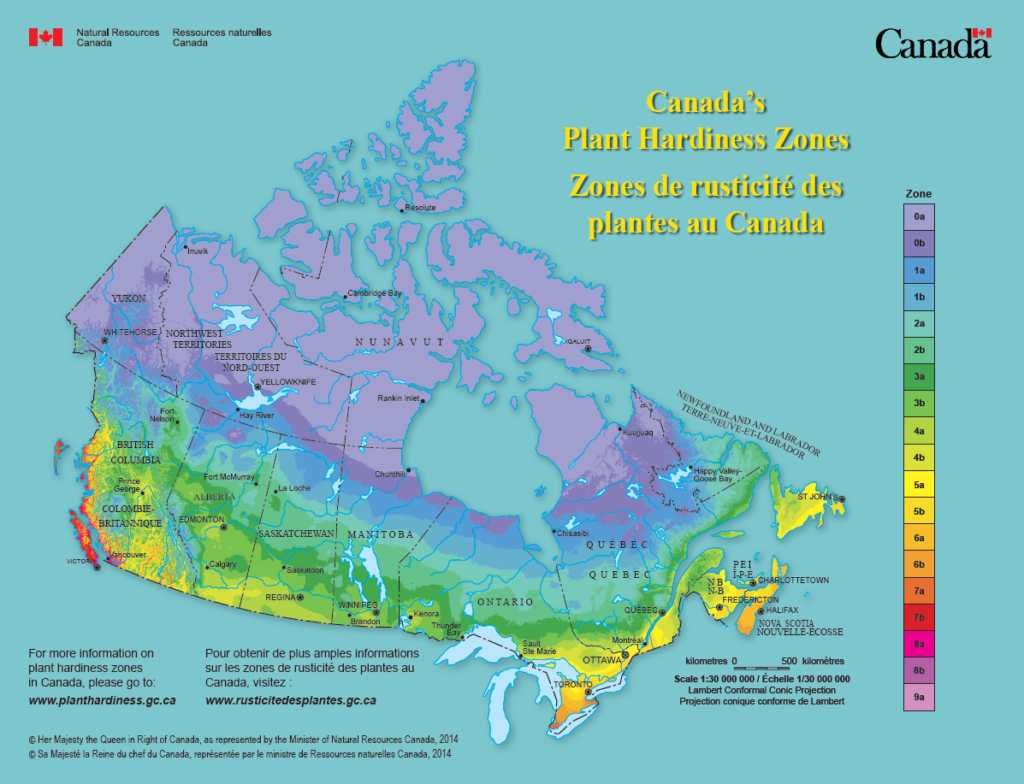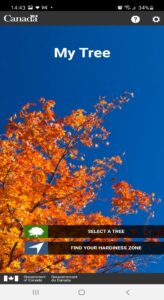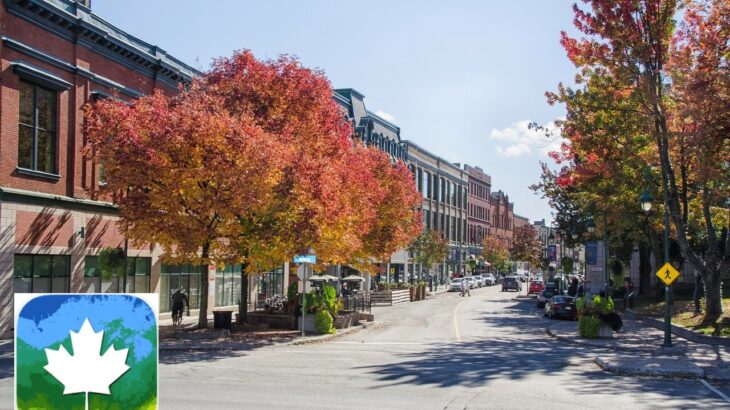By Ishara Yahampath, Communication, Education & Outreach editor
Tree planting is an essential nature-based action for mitigating the effects of global warming. As trees grow, they absorb and store the carbon dioxide that drives global warming, provide shade for roads, buildings, and people, and food and habitat for local wildlife.
While many Canadians recognize the importance of planting trees, they may not be familiar with the tree species that are most likely to thrive in their region. They need a good understanding of a tree’s unique soil and climatic requirements to optimize its likelihood of survival. Fortunately, there’s an app for that.
The My Tree app
To celebrate National Forest Week in 2016, the Canadian Forest Service launched the mobile app My Tree. This app shows users which of the 186 tree species in its database will grow best in their Canadian location. The application is free and accessible from the Government of Canada’s Mobile Centre and app stores.
The hardiness zone is one of the main variables you need to know to determine where a tree will grow. The zones are a geographical expression of local climatic conditions, primarily average minimum air temperature. The Government of Canada developed the hardiness zone map seen in the application through collaboration of scientists at the Canadian Forest Service, Agriculture and Agri-Food Canada and Natural Resources Canada’s Atlas of Canada. Canada has 19 hardiness zones. Each hardiness zone has a number and colour code. Users identify their Canadian hardiness zone by using coordinates from the GPS feature in their mobile device or by manually inputting their location via a touch screen.

Canada’s Plant Hardiness Zone Map is a general guide that helps gardeners choose plants well suited to their region. Image from Natural Resources Canada.
The application includes descriptions of 94 native and 92 introduced tree species—scientific name, tree type (coniferous or deciduous), maximum height, crown width, light requirements, soil requirements, and autumn leaf colour. There are also photographs and detailed illustrations of each tree species to help users identify their trees more accurately. The information on each tree species comes primarily from the Natural Resources Canada publication Trees in Canada.

The homepage of the My Tree application offers two entry points. Screenshot from the My Tree mobile application.
Using the My Tree app
Users can access information in the app using two gateways: hardiness zone locations or tree species. When users click on the specific hardiness zone location on the map, it lists all the tree species that can grow well in that location in alphabetical order. If users select a tree species, the app displays the hardiness zone limit of that species.
Some tree species can adapt to other geographical locations under some circumstances. So, the application emphasizes that users should consult a horticulturist for more information. My Tree does not offer advice on caring for the tree once it is planted.
Improving the My Tree app
The app’s users have the opportunity to share their thoughts on its effectiveness. Some claim that the app does not prioritize native species and encourages the introduction of non-native species. As one user commented: “The data collected is great and very thorough. The menus and organization are very intuitive. But who is this aimed at? If it is aimed at the average homeowner putting a tree in their backyard, why are you encouraging non-native species? Native species should not be treated equally to non-native species. That is how and why so many invasive species are plaguing the landscape.”
This user has a point. Planting native species helps to reestablish the original ecosystem of the region. Since they are very well suited to the climate and soil type of a particular region, native trees do not require the extra water and fertilizer that non-native species may need. And many insects, birds, and animals depend on native trees for food and shelter. An updated version of the app should include more information about the benefits of each tree species (habitat/food for birds, mammals or insects) to help users determine whether or not they want to add that plant to their property.
An update of the app should also address the changing climate. A tree species that may thrive in your backyard today might not be appropriate to plant there ten years from now. The hardiness zones should reflect those changes.
My Tree is the only available app that shows which trees will grow best in which Canadian location. The app is a great resource for learning about local trees and identifying candidates for your garden, but it has its limitations. Users should take its recommendations as suggestions and keep in mind that, thanks to climate change, hardiness zones and the trees they support have become moving targets.
Feature image: The NRCan-RNCan app My Tree can help determine which trees will thrive in an urban setting. Photo: André Chivinski,CC0; screenshot of My Tree logo: Google Play Store.





One thought on “Rebuilding our urban forests with the My Tree app”
Comments are closed.